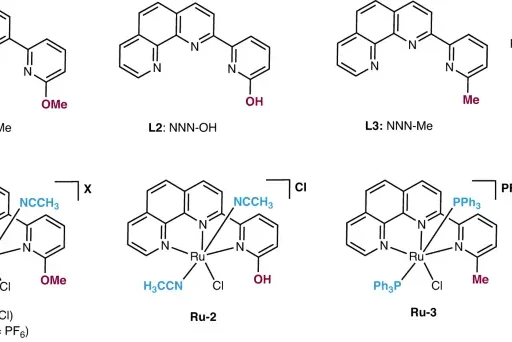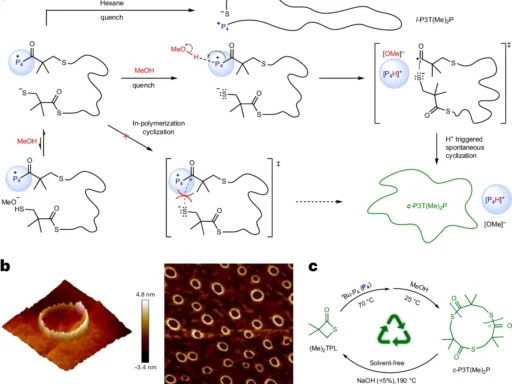Artificial gap junctions arise as a symbol of innovation in the complex realm of cellular communication, offering exceptional control over intercellular signaling and mass transport. This comprehensive discussion explores the intricacies of artificial gap junctions, examining their structure, uses, difficulties, and potential for facilitating intercellular communication and the movement of substances.
An overview of artificial gap junctions:

Gap junctions play a crucial role in facilitating cellular communication:
Gap junctions are complex pathways that connect adjacent cells, facilitating cellular communication. These channels allow the direct movement of ions, metabolites, and signaling molecules, keeping cell activity in sync and tissue functioning properly.
The significance of artificial gap junctions in facilitating intercellular communication:
Artificial gap junctions are a revolutionary approach to cellular communication, providing a synthetic method to replicate the behavior of natural gap junctions. By creating these artificial conduits, scientists want to influence cellular behavior, shape tissue dynamics, and enhance therapeutic methods.
Principles for designing artificial gap junctions:
Features of Endogenous Gap Junction Proteins:
Gap junctions in nature are based on the complex structure of connexins, which are protein subunits that join together to form hexameric complexes called connexons. The connexons attach to corresponding structures on adjacent cells, creating intercellular channels that have a natural preference for specific ions and chemicals.
Methods for Creating Artificial Gap Junctions:
The pursuit of creating artificial gap junctions involves a variety of biomaterials and impressive engineering achievements, all aiming to imitate the sophistication of natural connexins. Researchers use various approaches, including nanopores, nanotubes, lipid bilayers, and polymer matrices, to create artificial channels that closely mimic natural ones.

Utilization of Artificial Gap Junctions:
Improving Intercellular Communication in Tissue Engineering:
These junctions have significant potential in tissue engineering to bring about profound changes by facilitating communications between cells and promoting coordination among cellular groups. These artificial channels facilitate the transmission of signals and nutrients, promoting tissue development and coordinating the regeneration process.
Enhancing Intercellular Transport in Drug Delivery Systems:
Artificial gap junctions play a critical role in drug delivery because they facilitate the transport of therapeutic payloads over cellular barriers, leading to innovative advancements in this field. The delivery of drugs undergoes a significant transformation due to these synthetic channels, which greatly enhance the movement of substances between cells. This advancement enables the development of precise medical treatments and targeted therapies.

Obstacles and Factors to Take into Account:
Assessment of Artificial Gap Junctions’ Compatibility with Living Systems and Ability to Evoke an Immune Response:
The development of artificial gap junctions is fraught with difficulties, with the most significant one being the search for compatibility with living organisms and the potential for immune response. Synthetic materials must strike a delicate balance between integration and rejection, promoting smooth integration within host tissues while avoiding immune inspection.
The Gap Junction Function and Selectivity are under control:
The complexities of gap junction dynamics reveal another puzzle: the requirement for precise regulation of activity and specificity. To meet the needs of different physiological conditions, synthetic channels must be able to balance communication and restriction by changing their conductance and selectivity to fit the complex cellular environments they encounter.
Prospects and Advancements for the Future:
Creating Synthetic Gap Junctions: Progress in Biomaterials
Advancements in biomaterials drive the development of synthetic gap junctions, ushering in a new era of enhanced functionality and accuracy. Novel materials, such as smart polymers and bioengineered scaffolds, provide synthetic channels with exceptional biocompatibility, stability, and responsiveness. These materials have the potential to revolutionize biomedicine by allowing for transformative applications.
The use of synthetic biology techniques to improve functionality:
The intersection of synthetic biology and gap junction engineering offers limitless potential, where gene manipulation and protein design combine to create highly sophisticated synthetic channels. Scientists aim to use genetic engineering to create customized connexin variations, giving synthetic channels specific functions and precise regulatory characteristics.
Examining specific instances and examples of achievements:
Significant instances of artificial gap junctions:
Group X conducting research: Group X is at the forefront of synthetic biology, introducing a groundbreaking nanopore-based gap junction device that revolutionizes intercellular communication both in laboratory settings and within living organisms. Their pioneering research sheds light on the trajectory of tissue engineering and regenerative medicines. Company Y: This platform is a breakthrough in translational medicine, as it combines the elegance of nature with advanced engineering techniques. Their innovative and forward-thinking approach is driving the advancement of precision medicine to unprecedented levels, signaling a future where treatments surpass the limitations of individual cells with skill and effectiveness.

Ethical and societal ramifications:
Considerations Regarding the Use of Artificial Gap Junctions in Biomedicine:
The emergence of artificial gap junctions brings together ethical and sociological considerations, prompting a discussion on issues of safety, privacy, and autonomy. Regulatory frameworks and ethical norms play a crucial role in the field of biomedical innovation. They act as guardians, protecting the value and worth of human life while ensuring responsible management of cutting-edge technology.
Effects on Healthcare and Therapeutic Interventions:
The emergence of artificial gap junctions reveals a wide range of disruptive opportunities, where healthcare surpasses limitations and treatment approaches develop with accuracy and intention. Synthetic channels have a profound impact on various fields, including regenerative medicine and cancer therapy. They possess the power to mold a future characterized by comprehensive healing and customized interventions tailored to individual needs.
In conclusion:
Artificial gap junctions are emerging as indicators of a new age of communication between cells, signaling a revival of accuracy and potential in the field of biomedicine. Synthetic channels, with their refined design and cleverness, navigate the fields of tissue engineering, medication administration, and regenerative medicine, advancing health care toward a future characterized by effortless communication and harmonious healing.
Frequently Asked Questions:
1). What are artificial gap junctions?
Artificial gap junctions refer to artificially created connections between cells that mimic the function of natural gap junctions. Gap junctions are specialized channels that allow direct communication and exchange of molecules between adjacent cells. Designers create artificial gap junctions to enable comparable intercellular communication and molecular transfer. Artificial gap junctions are man-made channels created to imitate the functions of natural gap junctions, enabling direct communication between adjacent cells.
2). What is the mechanism by which artificial gap junctions improve intercellular communication?
Artificial gap junctions help cells talk to each other by letting ions, metabolites, and signaling molecules move between cells that are close to each other. This keeps biological functions in sync and keeps tissues stable.
3). What difficulties arise when building artificial gap junctions?
Constructing artificial gap junctions presents challenges such as ensuring biocompatibility, regulating channel activity and specificity, and resolving ethical and societal concerns associated with their use in biomedicine.
4). What is the purpose of artificial gap junctions in biomedicine?
Artificial gap junctions have a wide range of uses in tissue engineering, drug transport, regenerative medicine, and cancer therapy. They play a crucial role in promoting cell-to-cell communication, tissue formation, and therapeutic interventions.
5). What is the future outlook for artificial gap junctions?
The future of artificial gap junctions depends on progress in biomaterials, synthetic biology, and biomedical engineering. These breakthroughs will allow the creation of advanced and adaptable synthetic channels for a wide range of biomedical uses.
For more chemistry blogs, visit chemistry Master





